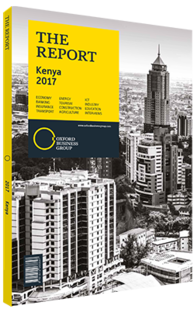Paul Muthaura, CEO, Capital Markets Authority: Interview

Interview: Paul Muthaura
How well insulated are Kenya’s capital markets from volatility in global portfolio flows?
PAUL MUTHAURA: We have been doing a lot of tracking of market metrics, and on the whole, the market has not seen a post-Brexit jump or drop. It must be appreciated that the markets have been fairly suppressed since the middle of 2015, which is due to a mix of domestic issues such as concerns over the applicability of capital gains tax together with high short-term debt rates, and of course the wider global rally of the dollar and commodity super-cycle decline that have negatively affected investor sentiment on emerging markets.
Significant investments in infrastructure are generating higher expectations for the role the capital markets are to play, which is laying the groundwork for substantial growth. As much as Kenya has ups and downs, our ups are proving more sustainable. We are more focused on addressing domestic and regional issues than looking too much to international developments. The downturn of the commodity super-cycle has been negative, but given the level of diversification in the economy, Kenya has performed relatively well for the region. If we are still achieving over 5% growth in an environment such as this, it paints a good picture for Kenya’s future and its markets.
What can be done to boost daily trading volumes?
MUTHAURA: We are working to address the liquidity environment. We continue to look at hitting some of our targets under the Capital Markets Master Plan with respect to new listings, but are conscious of large portfolios of assets sitting in institutional hands that are being held rather than traded. With the introduction of products such as securities lending and borrowing, we hope to see a higher level of liquidity. Having approved the new Nairobi Securities Exchange (NSE) exchange-traded fund listing and trading rules, we should start seeing more trading of indexed products, which are not as reliant on just seven or eight liquid counters.
How successful has the Growth Enterprise Market Segment (GEMS) subsection of the NSE been, and how can it attract new listings?
MUTHAURA: Generally, with all junior segments around the world, they grow slowly at first and then accelerate as they mature. Add the challenging global environment, and people have had a wait-and-see mentality. GEMS has generally tracked historical patterns, with its first three years having five new listings. In 2016 we have already had one company list, with several likely to come in the next few months. Companies are more interested in accessing alternate channels of capital and focusing more on corporate governance.
The new corporate governance code for public issuers introduced significantly greater clarity and an “apply-or-explain” framework whereby there is more flexibility in explaining how a company is meeting the principles outlined in the code. There is also a serious challenge where small and medium-sized enterprises (SMEs) want to see examples of other SMEs listing before they decide to do so themselves.
What can be done to increase domestic institutional investment in the NSE?
MUTHAURA: In the recent budget statement, we managed to secure a revision of the Retirement Benefits Authority guidelines, which allow pension funds to participate in a variety of products that were previously subject to significant restrictions, such as private equity, derivatives and real estate investment trusts. There is still some education that has to happen at the trustee level to convince them to give fund managers the room to get involved in these instruments, however. We need to explain the value of moving some pension money into some higher-risk categories. If pensions move into some of these asset classes, we should also see more global interest, as this can create a crowding in effect through a show of local confidence by local investors, which international funds can ride on.
You have reached the limit of premium articles you can view for free.
Choose from the options below to purchase print or digital editions of our Reports. You can also purchase a website subscription giving you unlimited access to all of our Reports online for 12 months.
If you have already purchased this Report or have a website subscription, please login to continue.

